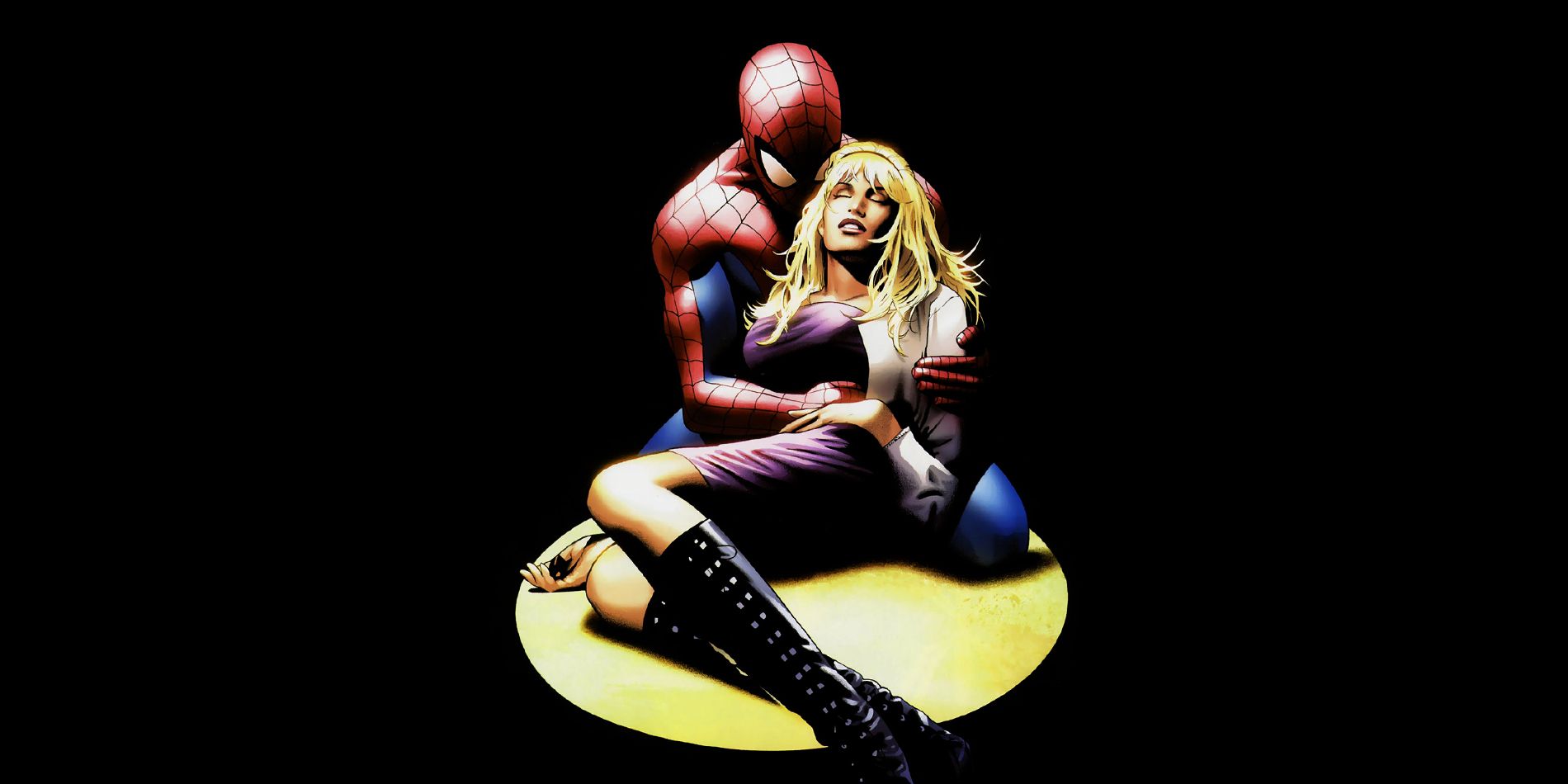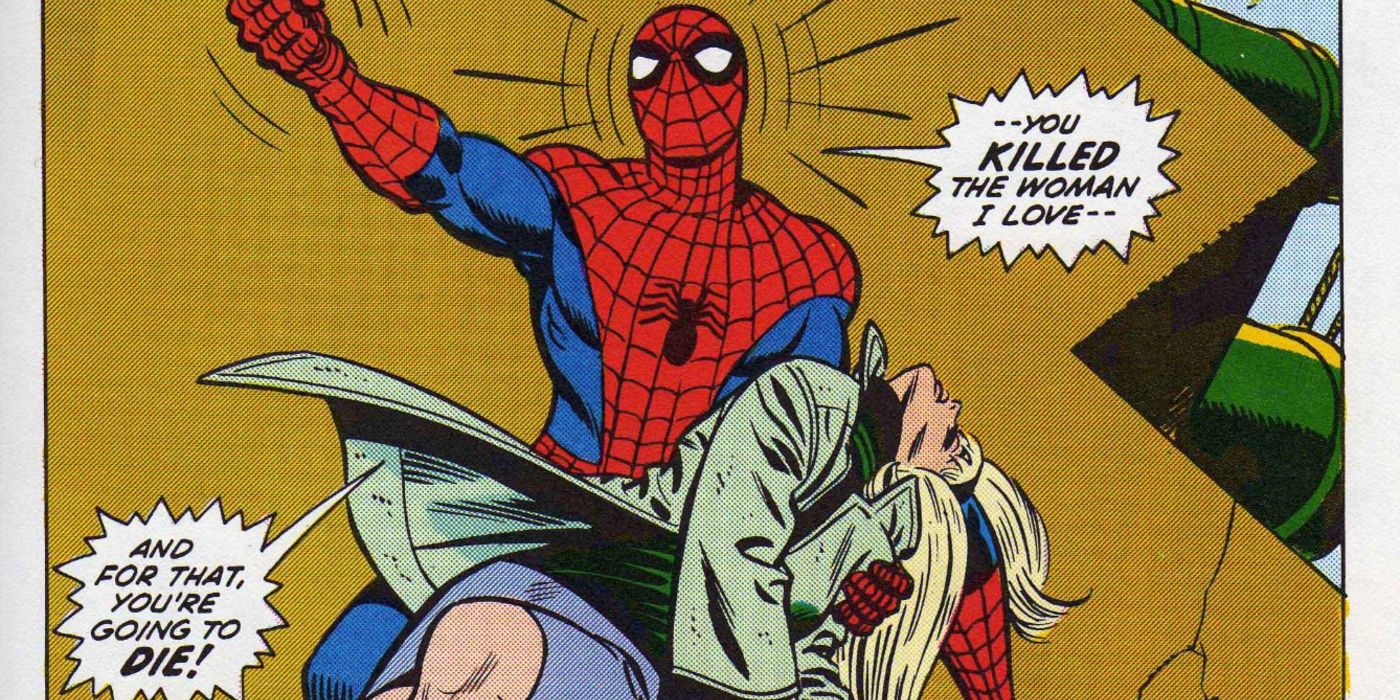Before the creation of Spider-Gwen in 2014, if ever there was a foundational event in the Marvel Multiverse, it was that Gwen Stacy died tragically as a direct result of her relationship with Peter Parker, aka Spider-Man. And although Gwen has been awarded a kind of modern-day renaissance by having her story shift from that of victim to survivor in an alternate universe where she becomes Spider-Woman, there is still much to be said about the guilt Peter carries over Gwen's death in two of Marvel's most notable universes.
Marvel's primary universe, dubbed Earth-616, is where comic book readers were originally introduced to Gwen, with her first appearance coming in 1965. Here, a romance blossomed between Peter and Gwen after initially meeting as students of Empire State University with a mutual interest in science. Gwen soon became Peter's main squeeze; the Lois Lane of Spider-Man comics at the time. Decades later, readers would see the launch of the Ultimate Universe in 2000, which offered a modern twist on Marvel's classic characters and stories. Here, Peter meets a much more rebellious and punk-style version of Gwen when she transfers to Peter's high school. The two become close friends, with their relationship never evolving past that.
In The Amazing Spider-Man #121, Gwen meets her shocking end in the primary Marvel universe. Armed with the knowledge that Peter Parker is Spider-Man, the Green Goblin kidnaps Gwen and knocks her off the George Washington Bridge. As Gwen falls, Peter manages to catch her leg with his webbing, but the resulting whiplash to Gwen's neck results in her death. Despite the Goblin's claim that the shock of a fall from that height would have killed her anyway, Peter still holds himself personally responsible for Gwen's death.
Ultimate Gwen's death can be found in the pages of Ultimate Spider-Man #62. After Peter supplies Dr. Curt Connors with a sampling of his genetically altered blood, Connors secretly combines Peter's DNA sample with Richard Parker's symbiotic suit research and accidentally creates Carnage. Flooded with Peter's memories, the confused vampiric organism arrives at May Parker's house where it finds Gwen. Acting on instinct, Carnage attacks Gwen and feeds off her DNA. Though it was Connors who created the monster, Peter holds himself personally responsible for Gwen's death. Without providing the key ingredient - his own DNA - Carnage would never have existed.
Though under vastly different circumstances, Gwen's death in both universes took a similar toll on Peter's psychology. He can see only his own involvement in Gwen's passing and rests the blame squarely on himself. Of course, this attitude can be linked back to Spider-Man's origin, where Peter was only able to recognize his own choice to not stop a burglar as the cause of his Uncle Ben's death. Yet, from an objective viewpoint, the burglar himself must be held responsible for his choice to pull the trigger on Ben. Likewise, it was the Goblin's choice to kidnap Gwen in one universe and Connors' choice to create Carnage in another. Although Peter's unceasing sense of responsibility is what makes him such an exceptional hero throughout the multiverse, that same sense of responsibility can also be seen as a hindrance. As is the case with Gwen's death in both the 616 and Ultimate universes, Peter's guilt leads him down a road of self-defeat that he could probably cut himself a little slack for.


